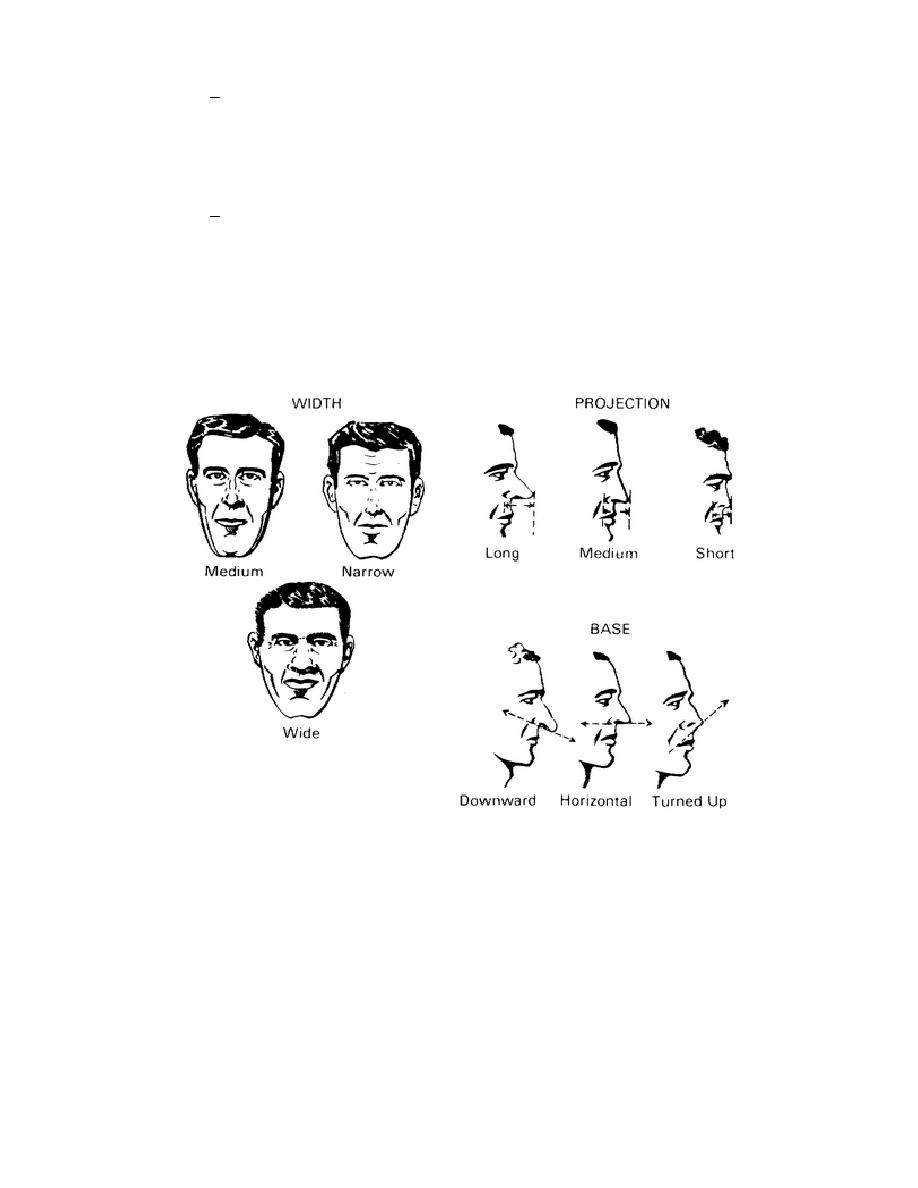
8. Eyeglasses (if worn).
Eyeglasses should be described in detail
to include style and color or frames, type and color of lenses, and method of
attachment to face.
Contact lenses may prove difficult to observe; however, the
careful special agent will note such indications of the presence of contact lenses
as watery eyes and excessive blinking.
Special types of eyeglasses, such as
monocles, lorgnettes, and pince-nez, should be carefully noted.
9. Nose. Length as short, medium, or long; width as thin or narrow,
medium, or thick; projection as long, medium, or short; base of the nose as turned
up, horizontal, or turned downward (Figure 5-9).
The root of the nose (juncture
with the forehead) should be described as flat, small, medium, or large; and the
line of the nose should be described as concave, straight, convex (hooked), roman,
or aquiline (Figure 5-10). Nostrils should be indicated as medium, wide or narrow;
large or small; height or low; round, elongated, or flaring. Peculiarities, such
as broken, twisted to right or left, turned up, pendulous, hairy, deep-pored, etc.
should be carefully noted and reported.
Figure 5-9.
The Nose: Base, Width, and Projection.
5-13
MP1016



 Previous Page
Previous Page
